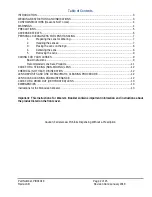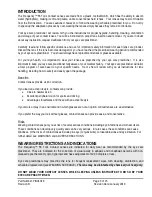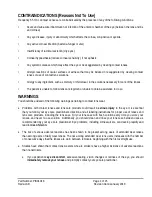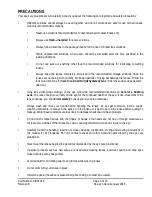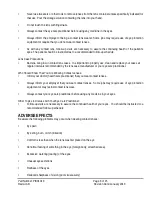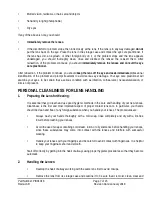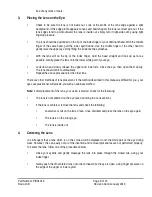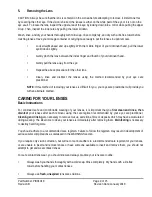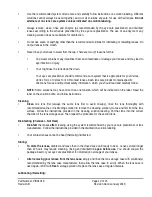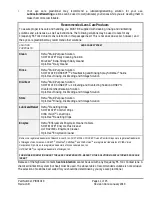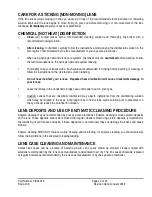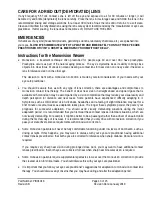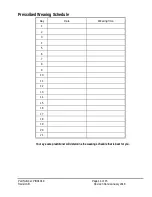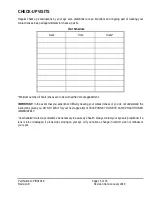
Part Number: PIB01018
Page 3 of 15
Revision B
Revision Date: January 2018
INTRODUCTION
The Frequency™ 55 Toric Contact Lenses are made from a plastic, methafilcon B, which has the ability to absorb
water (hydrophilic), making it soft and pliable, unlike conventional hard lenses. Your lenses may feel comfortable
from the first insertion. You are cautioned, however, to follow the wearing schedule prescribed for you. Do not try
to speed up the adaptation process by over-wearing the lenses simply because they remain comfortable.
Your eye care practitioner will review with you the instructions for proper hygiene, handling, cleaning, disinfection
and storage of your contact lenses. You will be instructed on proper lens insertion and removal. If you are in doubt
about any instruction, request clarification from your eye care practitioner.
Carefully read and follow specific directions and use for important safety information for each lens care product.
Discard the lens if the lens becomes damaged or you have reached the prescribed wearing period recommended
by your eye care practitioner. You should always have replacement lenses or glasses available.
For your eye health, it is important to wear your lenses as prescribed by your eye care practitioner. It is also
important to keep your eye care practitioner fully aware of your medical history. Your eye care practitioner will tailor
a total program of care based on your specific needs. He or she will review with you all instructions for lens
handling, including how to safely and easily open the package.
Benefits
Contact lenses provide vision correction.
If you lead an active lifestyle, contacts can provide:
•
Close to natural vision
•
Excellent peripheral vision for sports and driving
•
Advantages for athletes and those with an active lifestyle
If your work or play in an environment in which glasses are not an option, contact lenses are an alternative.
If you prefer the way you look without glasses, contact lenses can provide ease, and convenience.
Risks
Wearing contact lenses puts you at risk of several serious conditions including eye infections and corneal ulcers.
These conditions can develop very quickly and can be very serious. In rare cases, these conditions can cause
blindness. Other risks of contact lenses include pink eye (conjunctivitis), corneal abrasions and eye irritation. For
further detail, see WARNINGS and ADVERSE REACTIONS.
WEARING RESTRICTIONS AND INDICATIONS
The Frequency™ 55 Toric Contact Lenses are indicated for daily wear as recommended by the eye care
practitioner. They are indicated for the correction of visual acuity in aphakic and not-aphakic persons with non-
diseased eyes that are myopic, hyperopic and have astigmatism of 12.00 diopters or less.
Eye care practitioners may prescribe the lens for frequent replacement wear, with cleaning, disinfection, and
scheduled replacement (see WEARING SCHEDULE). The lens may be disinfected by chemical (not heat) only.
DO NOT WEAR YOUR CONTACT LENSES WHILE SLEEPING UNLESS INSTRUCTED TO DO SO BY YOUR
EYE CARE PRACTITIONER.


